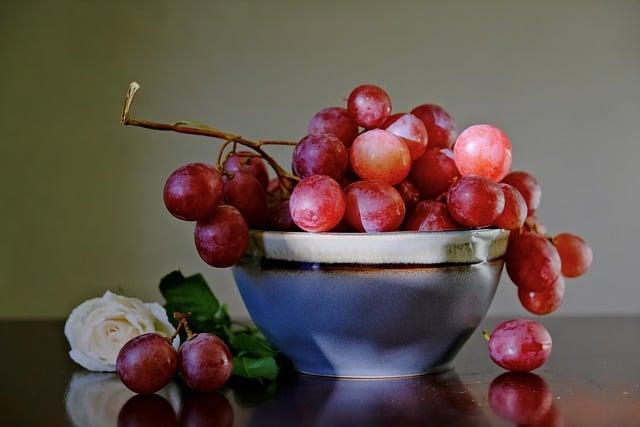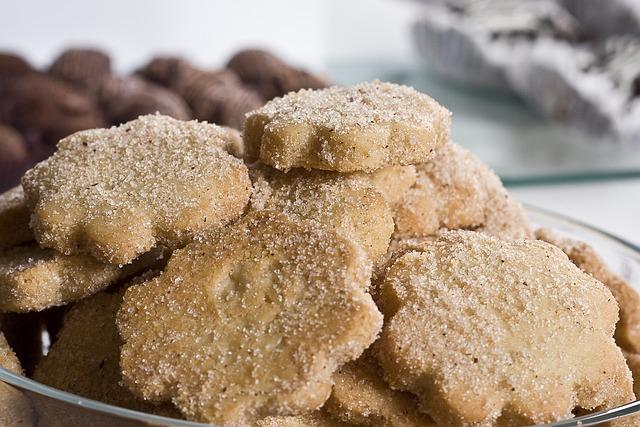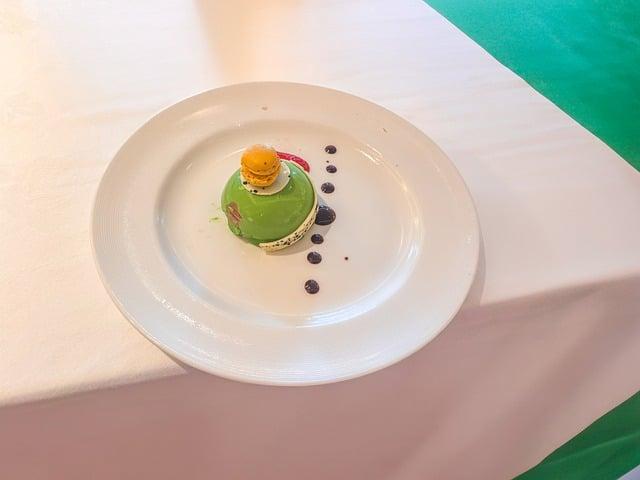In a quaint Spanish village, as the first snowflakes danced through the air, families gathered around the table, their hearts warmed by the spirit of Christmas. The aroma of sweet spices filled the room, heralding the arrival of the most cherished dessert: turrón. This nougat, made from almonds and honey, had been passed down through generations. Each bite was a reminder of love and tradition, as laughter echoed and stories were shared. As the clock struck midnight, the village came alive with joy, united by the sweet taste of turrón, a symbol of their festive heritage.
Table of Contents
- Exploring the Rich Heritage of Spanish Christmas Desserts
- The Sweet Symphony of Turrón: A Festive Favorite
- Polvorones and Mantecados: The Melt-in-Your-Mouth Delights
- Celebrating with Roscón de Reyes: A Tradition for the Epiphany
- Q&A

Exploring the Rich Heritage of Spanish Christmas Desserts
Spain’s Christmas season is a delightful tapestry of flavors, colors, and traditions, with desserts playing a central role in the festivities. Among the most cherished treats is **Turrón**, a nougat made from almonds, honey, and egg whites, often enjoyed in various regional styles. Another beloved dessert is **Polvorones**, crumbly almond cookies that melt in your mouth, typically dusted with powdered sugar. These treats are not just desserts; they are a symbol of family gatherings and shared moments, often prepared in homes across the country during the holiday season.
In addition to Turrón and Polvorones, the festive table often features **Mantecados**, rich shortbread cookies that come in a variety of flavors, including cinnamon and chocolate. Another standout is **Roscón de Reyes**, a sweet bread shaped like a crown, traditionally served on Epiphany. This dessert is adorned with colorful candied fruits and often hides a small figurine and a bean inside, adding an element of surprise to the celebration. Each of these desserts carries its own story and significance, reflecting the diverse cultural influences that have shaped Spanish culinary traditions over the centuries.

The Sweet Symphony of Turrón: A Festive Favorite
As the holiday season approaches, the air in Spain fills with the delightful aroma of turrón, a traditional confection that has become synonymous with Christmas celebrations. This sweet treat, made primarily from almonds, honey, sugar, and egg whites, comes in various textures and flavors, each offering a unique taste experience. The two most popular types are **turrón de Jijona**, which is soft and chewy, and **turrón de Alicante**, known for its hard, crunchy consistency. Both varieties are often enjoyed as part of festive gatherings, where families and friends come together to share stories and laughter over a plate of these delectable delights.
Beyond its delicious taste, turrón carries a rich history that dates back to the 15th century, with roots in the Mediterranean region. It is often crafted using artisanal methods, passed down through generations, making each bite a celebration of tradition and craftsmanship. During the holiday season, it is common to find turrón presented in beautifully decorated boxes, making it a popular gift choice. Whether enjoyed as a dessert after a festive meal or savored with a cup of hot chocolate, this beloved treat embodies the spirit of togetherness and joy that defines the Christmas season in Spain.

Polvorones and Mantecados: The Melt-in-Your-Mouth Delights
When the holiday season approaches in Spain, the air fills with the sweet aroma of polvorones and mantecados, two traditional confections that have become synonymous with Christmas celebrations. These delightful treats, originating from Andalusia, are made primarily from flour, sugar, and nuts, resulting in a crumbly texture that melts in your mouth. Polvorones are often flavored with ingredients like cinnamon, almonds, or lemon zest, while mantecados are typically enriched with lard, giving them a rich, buttery taste. Both desserts are dusted with powdered sugar, adding a festive touch that makes them irresistible during family gatherings and holiday feasts.
What sets these sweets apart is not just their flavor but also their cultural significance. They are often enjoyed alongside a warm cup of hot chocolate or a glass of sweet wine, creating a perfect pairing that enhances the festive spirit. Families often engage in the tradition of baking these treats together, passing down recipes through generations. The joy of sharing polvorones and mantecados during Christmas is a cherished custom, symbolizing togetherness and the warmth of the season. Whether you savor them at home or gift them to loved ones, these melt-in-your-mouth delights are a quintessential part of Spain’s holiday heritage.

Celebrating with Roscón de Reyes: A Tradition for the Epiphany
As the festive season draws to a close, families across Spain gather to celebrate the Epiphany with a delightful treat known as Roscón de Reyes. This traditional cake, shaped like a crown, is adorned with colorful candied fruits that symbolize the jewels of a royal crown. Each year, the Roscón is baked with a hidden surprise—a small figurine and a dried bean. The person who finds the figurine is crowned king or queen for the day, while the one who discovers the bean must buy the Roscón the following year. This playful tradition adds an element of excitement and anticipation to the celebration, making it a cherished moment for both children and adults alike.
Typically enjoyed on January 6th, the day of the Three Kings, this sweet bread is often filled with whipped cream, chocolate, or other delicious fillings, catering to a variety of tastes. Families and friends come together to share this festive dessert, creating a warm atmosphere filled with laughter and joy. The Roscón de Reyes not only satisfies the sweet tooth but also serves as a reminder of the importance of community and togetherness during the holiday season. With each slice, stories are shared, and memories are made, ensuring that this delightful tradition continues to thrive in Spanish culture.
Q&A
-
What is the most traditional Christmas dessert in Spain?
The most traditional Christmas dessert in Spain is Turrón, a nougat made primarily from almonds, honey, sugar, and egg whites. It comes in various varieties, with the most popular being Turrón de Alicante (hard) and Turrón de Jijona (soft).
-
Are there other popular Christmas desserts in Spain?
Yes, besides Turrón, other popular Christmas desserts include:
- Polvorones: Crumbly almond cookies.
- Mantecados: Similar to polvorones but often flavored with spices.
- Roscón de Reyes: A sweet bread traditionally eaten on Epiphany.
-
When are these desserts typically enjoyed?
These desserts are commonly enjoyed throughout the Christmas season, especially during family gatherings and festive meals, culminating in the celebration of Epiphany on January 6th.
-
Can these desserts be found outside of Spain?
Yes, many Spanish bakeries and specialty stores around the world offer these traditional Christmas desserts, especially in areas with a significant Spanish-speaking population.
As the festive season unfolds, the sweet aroma of turrón and polvorones fills Spanish homes, embodying the spirit of tradition. Embrace these delightful treats, and let them add a touch of warmth and joy to your own holiday celebrations. Happy feasting!

大家好,我是彼得潘,專業的手法身體治療師。我喜歡探索和研究各種主題,並透過與人工智慧的合作分享專業、實用、有趣的文章。我們定期進行人工審核,以確保內容的準確性。如果您發現文章中有任何不準確的地方,請隨時與我們聯繫,我們會及時糾正。您可以透過 [email protected] 與我們聯繫。



